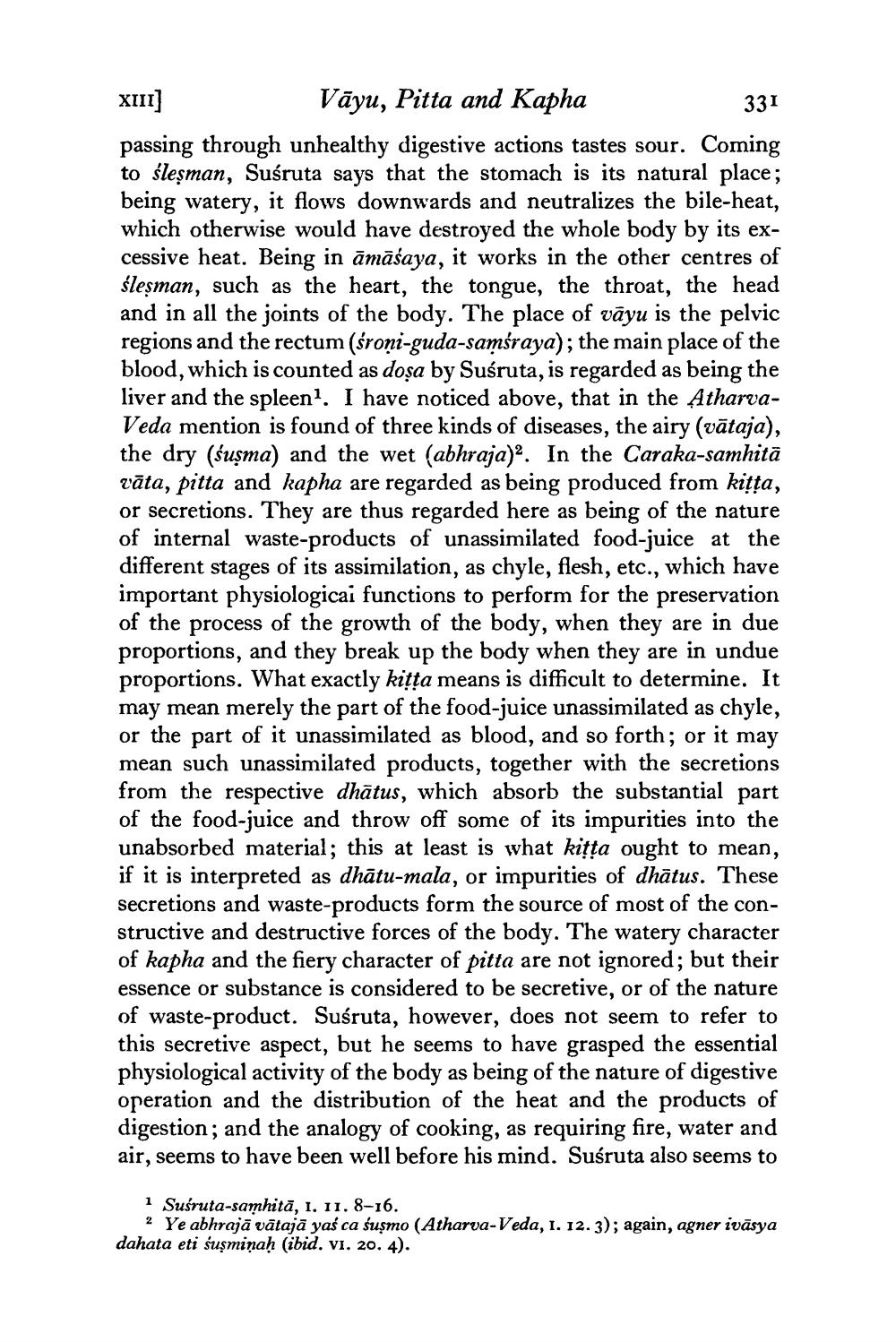________________
331
XIII)
Vāyu, Pitta and Kapha passing through unhealthy digestive actions tastes sour. Coming to śleşman, Susruta says that the stomach is its natural place; being watery, it flows downwards and neutralizes the bile-heat, which otherwise would have destroyed the whole body by its excessive heat. Being in āmāśaya, it works in the other centres of śleşman, such as the heart, the tongue, the throat, the head and in all the joints of the body. The place of vāyu is the pelvic regions and the rectum (śroņi-guda-samśraya); the main place of the blood, which is counted as doşa by Suśruta, is regarded as being the liver and the spleen?. I have noticed above, that in the AtharvaVeda mention is found of three kinds of diseases, the airy (vātaja), the dry (suşma) and the wet (abhraja)?. In the Caraka-samhitā vāta, pitta and kapha are regarded as being produced from kițța, or secretions. They are thus regarded here as being of the nature of internal waste-products of unassimilated food-juice at the different stages of its assimilation, as chyle, flesh, etc., which have important physiologicai functions to perform for the preservation of the process of the growth of the body, when they are in due proportions, and they break up the body when they are in undue proportions. What exactly kițța means is difficult to determine. It may mean merely the part of the food-juice unassimilated as chyle, or the part of it unassimilated as blood, and so forth; or it may mean such unassimilated products, together with the secretions from the respective dhātus, which absorb the substantial part of the food-juice and throw off some of its impurities into the unabsorbed material; this at least is what kitța ought to mean, if it is interpreted as dhātu-mala, or impurities of dhātus. These secretions and waste-products form the source of most of the constructive and destructive forces of the body. The watery character of kapha and the fiery character of pitta are not ignored; but their essence or substance is considered to be secretive, or of the nature of waste-product. Susruta, however, does not seem to refer to this secretive aspect, but he seems to have grasped the essential physiological activity of the body as being of the nature of digestive operation and the distribution of the heat and the products of digestion; and the analogy of cooking, as requiring fire, water and air, seems to have been well before his mind. Suśruta also seems to
Susruta-samhitā, 1. 11. 8-16. 2 Ye abhrajā vātajā yaś ca susmo (Atharva-Veda, 1. 12.3); again, agner ivāsya dahata eti suşminaḥ (ibid. vi. 20. 4).




